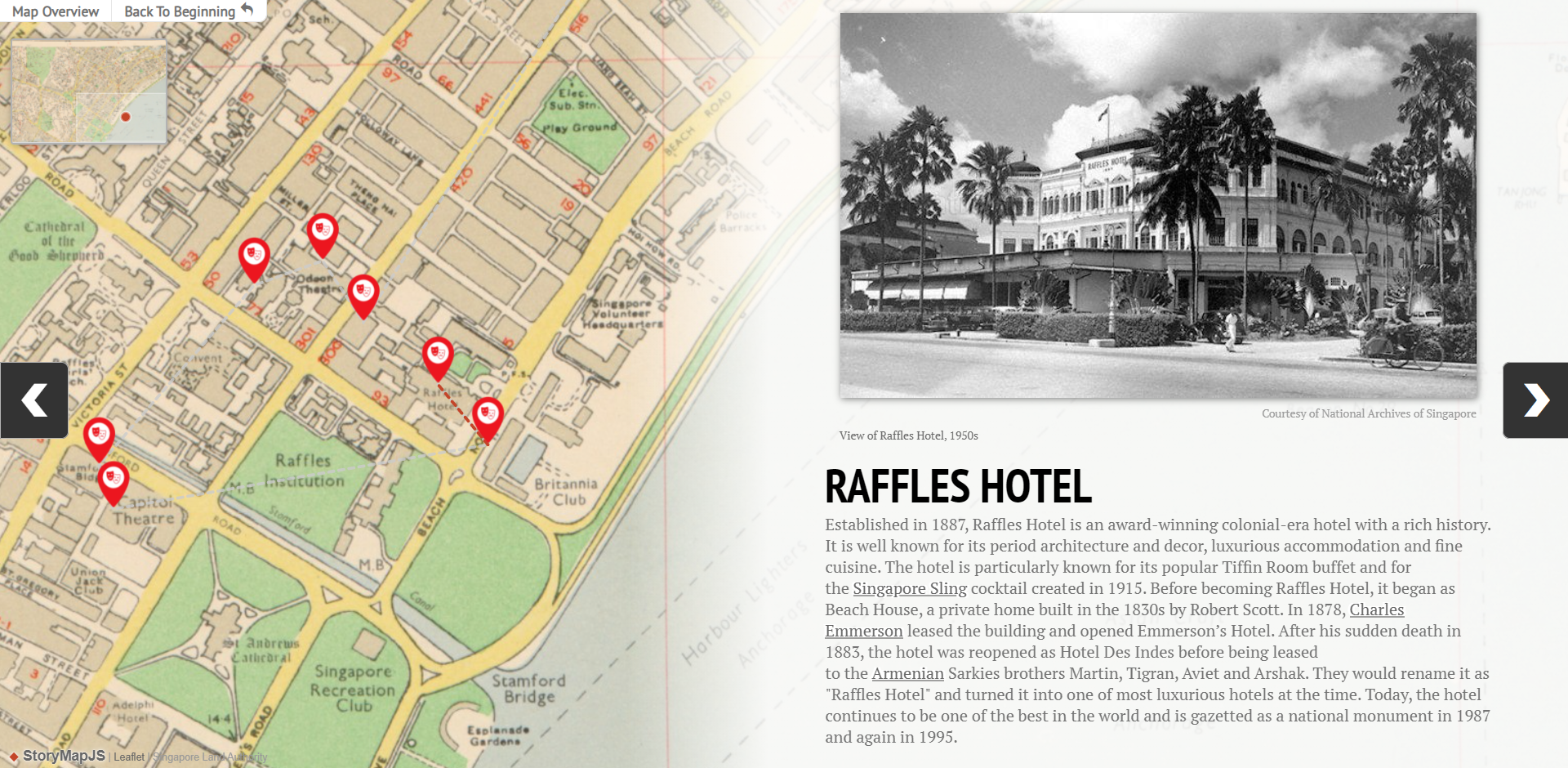Bras Basah: A Place For Entertainment
Cinemas In Bras Basah
As many of the first cinemas in Singapore were located within and near Bras Basah, the district could be considered as a haven for movies and blockbusters. The photo essay below revisits the seven most iconic cinemas in Bras Basah.
Cathay Building
Located at 2 Handy Road, Cathay Building originally comprised the current Cathay cineplex and a 16-storey tower. The former was completed in 1939, while the latter in 1941. At 83.5m, the tower was considered as Singapore’s first skyscraper and tallest building at the time.
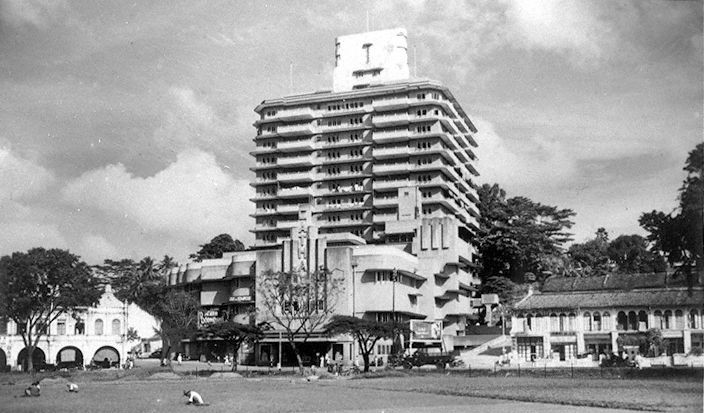 |
| Cathay Building (shown above) was used to house a cinema, hotel and restaurant. It was designed by Scottish architect Frank Wilmin Brewer of Arbenz and Brewer and was commissioned by Mrs Loke Yew née Lim Cheng Kim and her son Loke Wan Tho. They established Associated Theatres in 1935, the predecessor of Cathay Organisation. (Image Credit: Courtesy of National Archives of Singapore) |
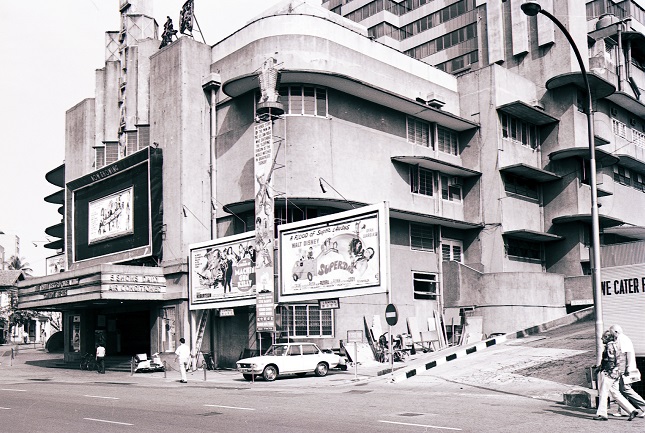 |
| The 1,300-seat cinema was located in the cineplex (shown above) and was among the main highlights of the building. Not only was it the first fully air-conditioned public facility at the time, it also had modern facilities such as plush armchairs, broad aisles between rows of seats as well as box seats for distinguished guests. The proscenium was decorated in Art Deco style with four modern pillars and a shell-shaped acoustic plaster design on the walls. (Image Credit: Courtesy of the National Museum of Singapore, National Heritage Board) |
 |
| The cinema opened on 3 October 1939 with the premiere of The Four Feathers. Special guests for the show included then Colonial Secretary Alexander Small and Lady Small. Today, although the Cathay tower had been torn down, the cineplex was gazetted in 2003 as a historical landmark and redeveloped into today’s The Cathay (shown above). (Image Credit: Photo by Nlannuzel via Wikicommons) |
Like the cinemas today, Cathay Cinema during the 1960s and 1970s was frequented by students, especially those from Raffles Institution, St. Jospeh's Institution and Raffles' Girls School when these schools were still located in Bras Basah. Click or tap HERE to reveal below Michael Lim's, a former student from St Jospeh's Institution, recollection of those days. (Source: NewspaperSG)
"Whenever the weather was hot, we would skip school and sneak into Cathay, which was one of the few places in town with air-conditioning…You can tell who went to the movies by the ice-cream stains on their shirts. Our teachers used to catch us that way. Actually, they themselves snuck off to the movies in the afternoons. I remember seeing a couple of them in the back row once. Maybe they were there to bust us."
The Cathay Building was such an iconic structure that it was featured in many historical audiovisual materials including those from the collection of the National Archives of Singapore as well as others posted in blogs or social media channels maintained by heritage enthusiasts such as Dutch photographer Michael Rogge’s YouTube channel. You can watch one of them from his channel on the Cathay Building below.
Cathay Building in 1951 from Michael Rogge’s YouTube Channel
Who is Michael Rogge? And why he has footages of old Singapore? Click or tap HERE to reveal the answer below. (Source: Hong Kong Memory)
"Born IJsbrand Cornelius Rogge, Dutchman Michael Rogge has had a passion for photography since young. He took up residence in Hong Kong from 1949 to 1954 and captured the city’s scenery on film. During his time in the East Asia, he also travelled to other places including Japan, Malaya and Singapore. Through these journeys, he brought his camera along and recorded what he saw. Today, he has made them available on YouTube thus providing us the opportunity to experience how these places were like more than 50 years ago."
Odeon Theatre
The Odeon Cinema was built in 1953. Located at the junction of North Bridge Road and Cashin Street, it was Cathay Organisation’s flagship cinema and its most successful box-office earner in Singapore. Due to its prime location, the Odeon, during the nation-building years, was a favourite hangout for students from schools in the vicinity, including the St Joseph’s Institution, Convent of the Holy Infant Jesus, Catholic High and Raffles Institution.
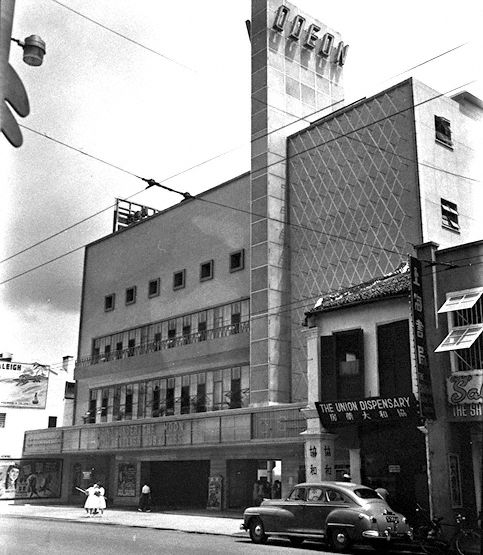 |
| Designed by architectural firm Palmer and Turner, Odeon Cinema was officially opened by then Commissioner-General for Southeast Asia Malcolm MacDonald at the charity premiere of The Snows of Kilimanjaro, starring Gregory Peck, Susan Hayward and Ava Gardner in June 1953. Among those present were Twentieth Century Fox’s stars Constance Smith and Jeffrey Hunter. (Image Credit: Ministry of Information and the Arts Collection, courtesy of National Archives of Singapore) |
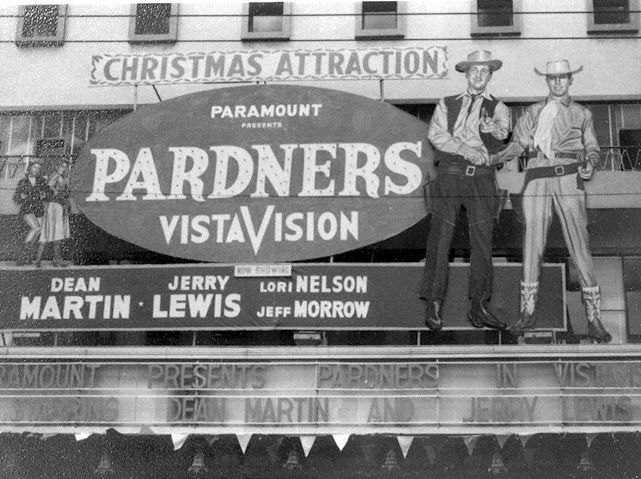 |
| The air-conditioned Odeon Cinema screened mainly first-run English-language films. It was equipped with four Gaumont-Kalee “21” projectors, which supported Stereophonic Sound, Vista Vision and Cinemascope. It became the first cinema under Cathay to use Cinemascope in 1953 during the screening of The Robe, which starred Richard Burton and Jean Simmons. (Image Credit: Courtesy of National Archives of Singapore) |
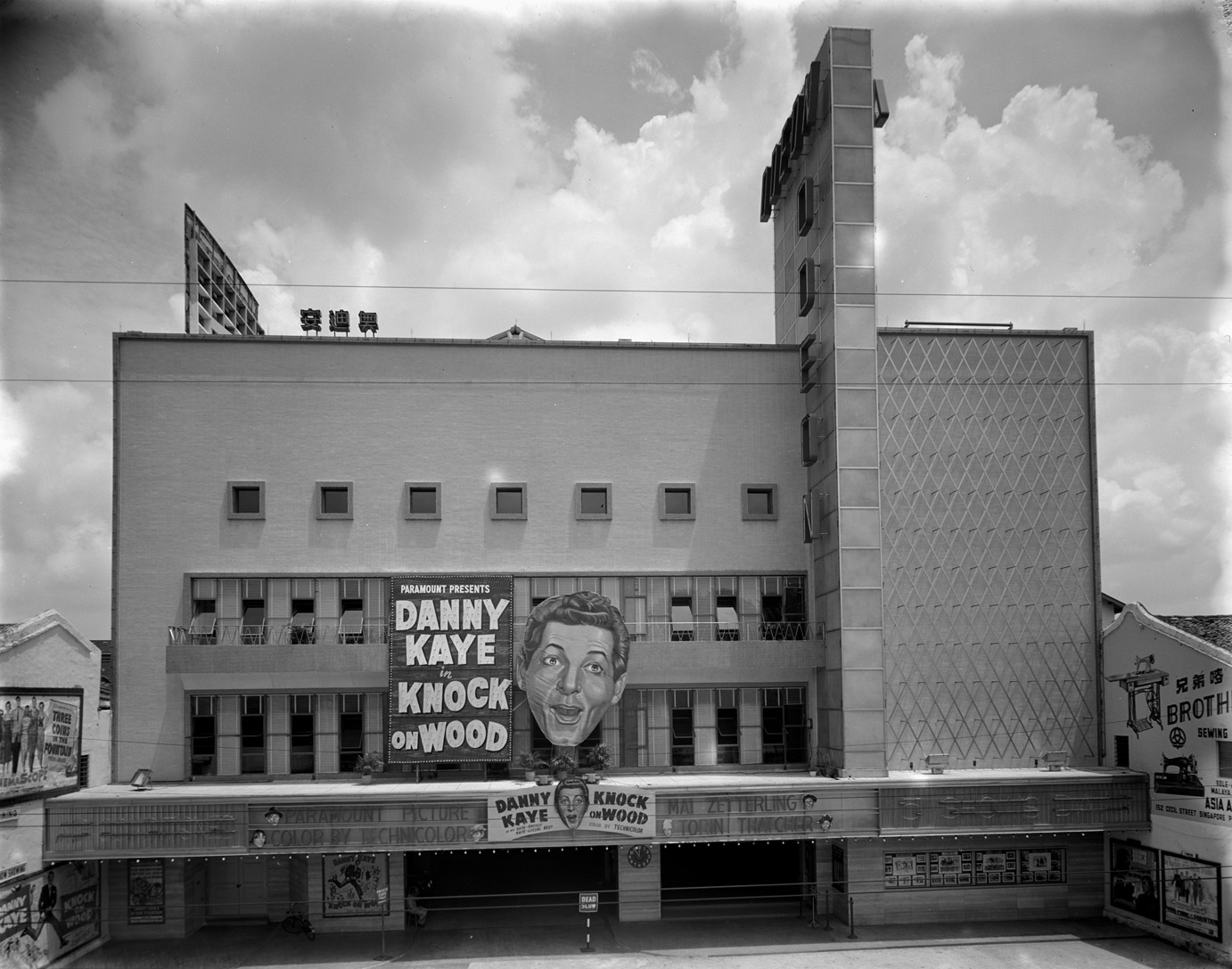 |
| In 1984, due to low cinema attendance and high property prices, Cathay Organisation sold Odeon to United Overseas Land. After screening its last firm, Breakdance, on 30 June 1984, the building was subsequently demolished. Its former site is now occupied by Odeon Tower and K. H. Kea Building. (Image Credit: All rights reserved, Family of Kouo Shang-Wei and National Library Board Singapore 2007) |
The closure of Odeon was met with sadness in the community, especially among those who frequented there either as students or moviegoers. Click or tap HERE to reveal why below. (Source: NewspaperSG)
"Odeon in those days was more than just a cinema hall. A way of life grew around it, especially among the teenaged school boys and girls…many students of nearby St Jospeh’s Institution and those from the Convent of the Holy Infant Jesus went to afternoon shows at the Odeon. One of the musts before one entered the cinema hall was to buy conical packet of kachang puteh. After the show was over, the students would walk across the road to Baker’s Bakery, better known as Red House, where between sips and coffee or F&N orange crush and curry puffs, they either eyed each other or the students from Raffles Girls’ School and their companions from Raffles Institution. Some of these staring incidents led to puppy-love romances; others led to fights between the boys from the two rival groups. But the RI-RGS crowd preferred Capitol cinema and often patronised the Magnolia Milk Bar at Stamford Road."
Capitol Theatre
The Capitol Theatre, located at the junction of Stamford Road and North Bridge Road, opened in 1930. It was considered one of the finest cinemas of the time. Originally owned by the Namazie family, Capitol Theatre, along with the four-storey adjoining building then known as Namazie Mansions, was sold to Shaw Organisation after the Second World War.
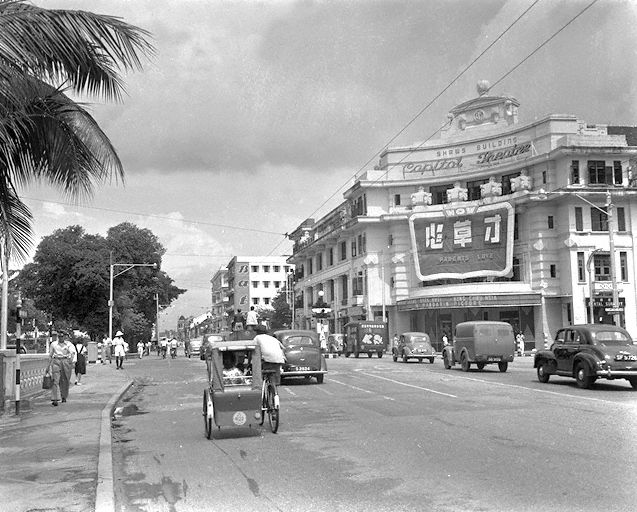 |
| Spanning more than 2,100 sq m, the Capitol Theatre had a neoclassical architecture designed by British architects P. H. Keys and F. Dowdeswell. They drew inspiration from the Roxy Theatre in New York, replicating its seating arrangements, lighting and general layout. (Image Credit: Ministry of Information and the Arts Collection, Courtesy of National Archives of Singapore) |
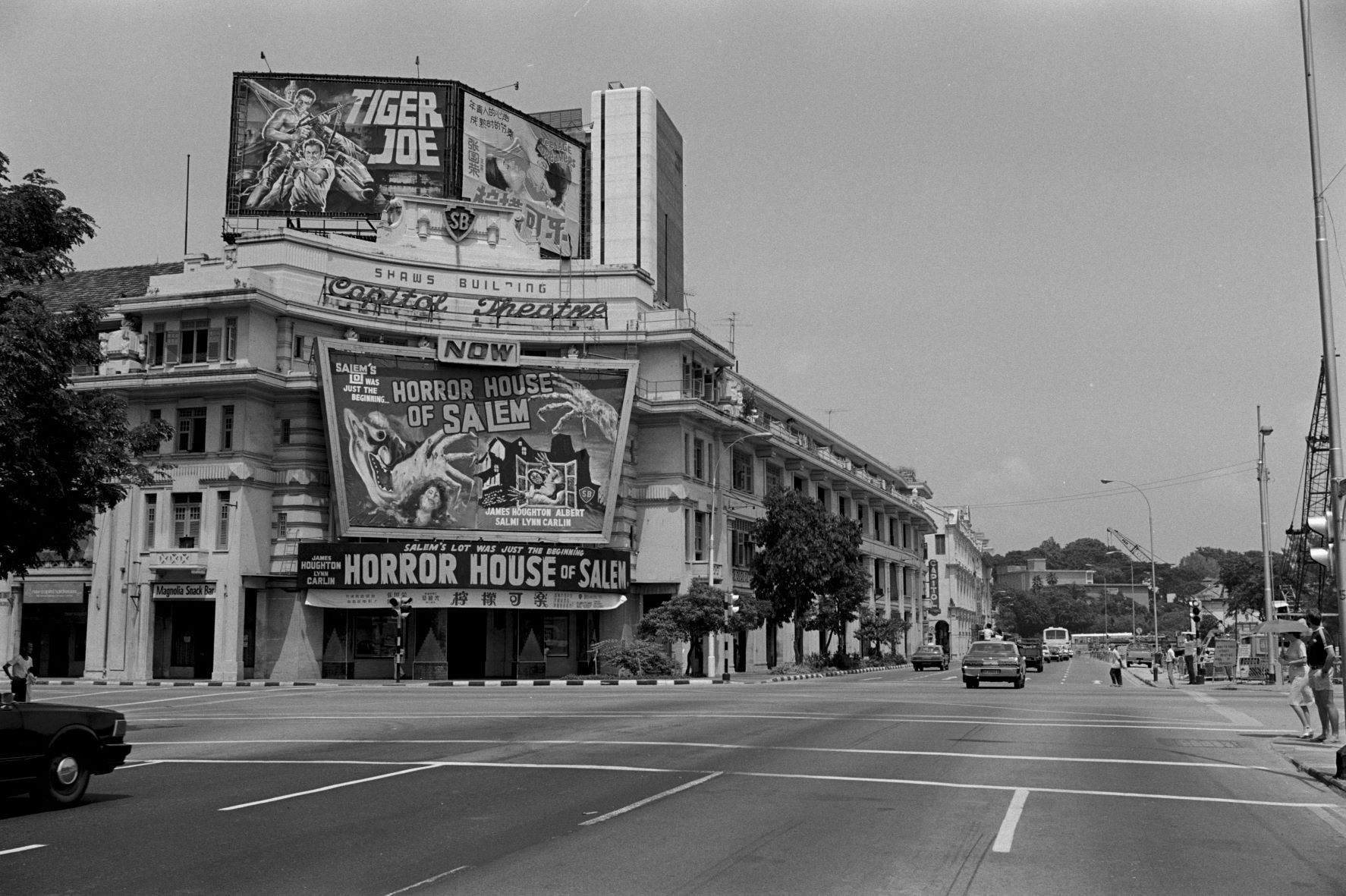 |
| At its opening, the theatre was hailed as the most modern auditorium with the largest capacity in the Far East. The theatre could accommodate at least 1,600, with 1,100 seated on the ground floor. Another 500 seats were available at the circle that could be accessed via lifts or staircases. (Image Credit: All rights reserved. Lee Kip Lin and National Library Board, Singapore 2009) |
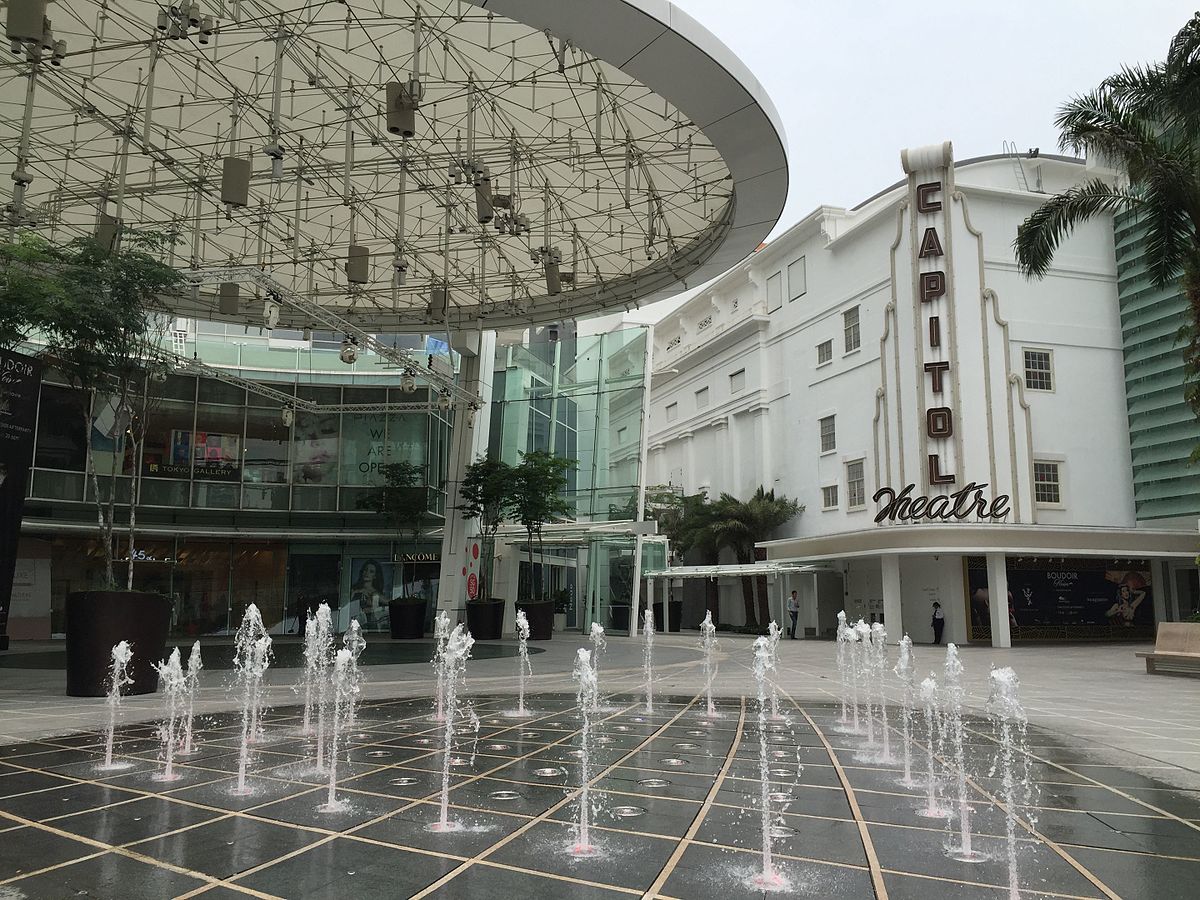 |
| The Capitol had a large projection room, which was located below the balcony and ran the length of the building instead of being traditionally sited in the rear. It housed the latest Simplex projector and was installed with fireproof protection shutters. Designed expressly for talkies, the theatre’s acoustics and soundproofing were said to be exceptional. Today, Capitol Building, along with its surrounding buildings including the former Stamford House, is now part of the mixed-use redevelopment, Capitol Singapore, after it was conserved as a historical landmark. (Image Credit: Photo by Jacklee via Wikicommons) |
Do you know that there was a Mickey Mouse Club in the Capitol building? Set up in 1933 by Joe Fisher and his brother, Julius, members of the club could watch matinee shows for as little as 25 cents or for free. Click or tap HERE to reveal below how architect Lee Kip Lin remembers his time as a club member. (Source: NewspaperSG)
"We school children flocked there during the weekends to enjoy the privilege of paying a 25-cent admission fee for any class of seat at the matinee upon identifying ourselves by our Mickey Mouse badges. On Saturdays, the kids would hang around the theatre. It was an occasion for committee members to exercise their authority and also to impress the girls. The films shown included the musicals featuring Deanna Durbin, Fred Astaire and Ginger Rogers."
Rex Cinemas
Rex Cinemas (or Rex Theatres) was located in a three-storey building along MacKenzie Road. Considered as one of the iconic cinemas in Singapore’s entertainment history, Rex was also a familiar household name among many Singaporeans especially the Indian community.
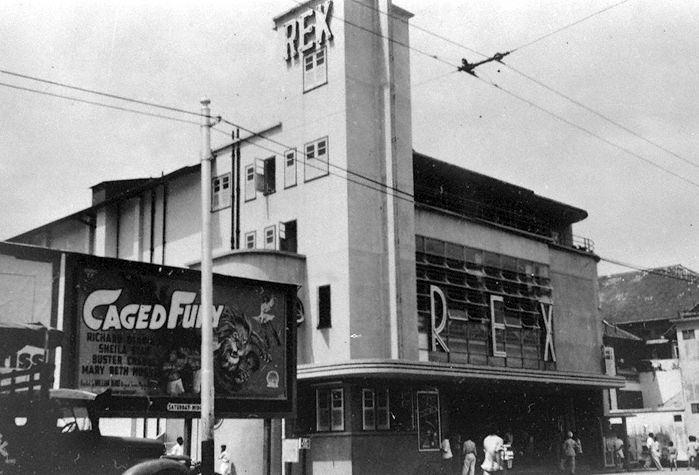 |
| First opened in 1946 by the Shaw Brothers with the screening of The Jungle Book, Rex was known for its air-conditioned modernity as well as its tea rooms and restaurants. Back in its heyday during the 1970s, it was not unusual to see long queues snaking out of the cinema. It was said that moviegoers would show up early in the morning, long before the screening time, to purchase tickets before they sold out. (Image Credit: Wong Kwan Collection, courtesy of National Archives of Singapore) |
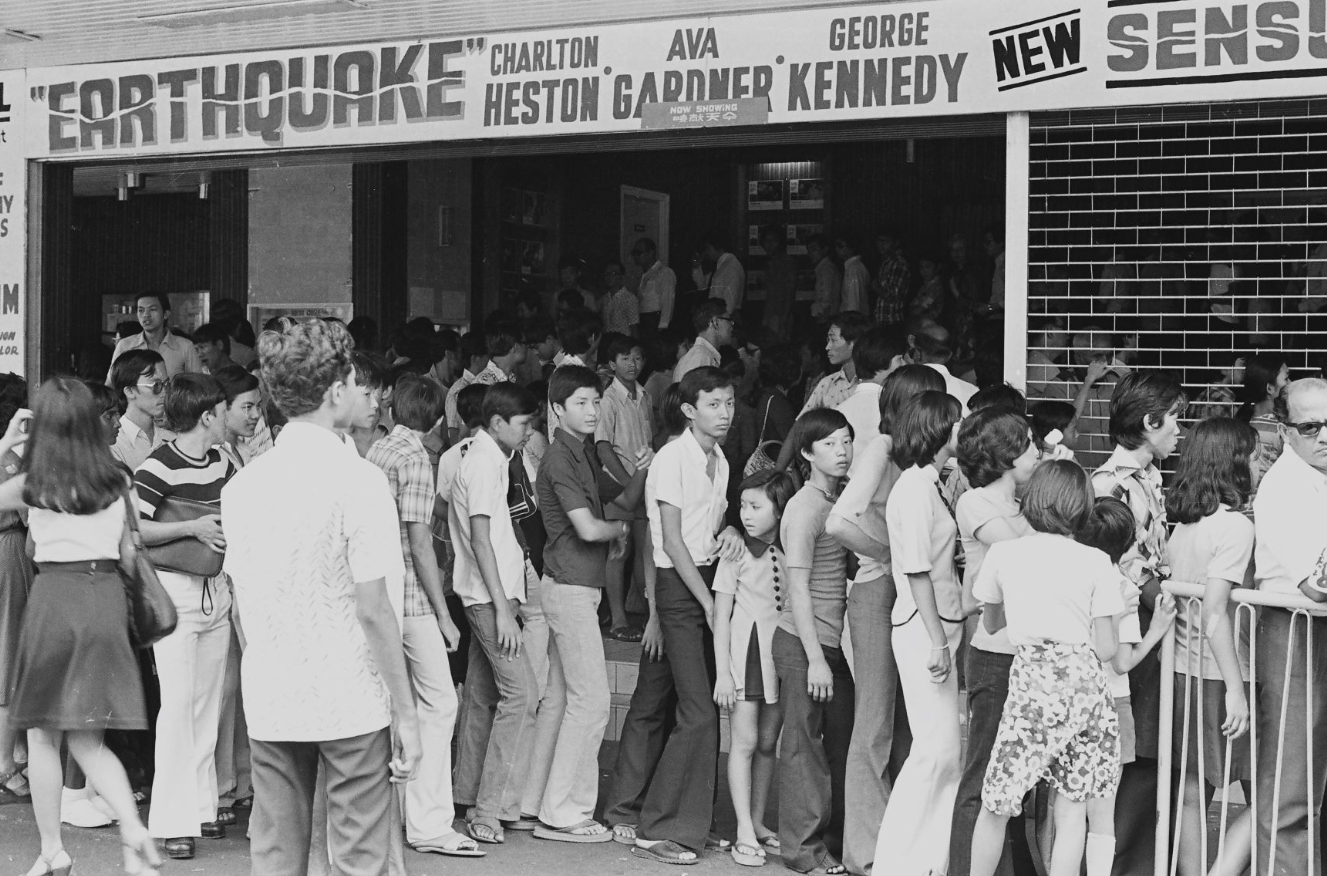 |
| The large audience footfall also drew hawkers to set up makeshift stalls there at night for hungry moviegoers. In fact, popular curry puff chain Old Chang Kee started its business with a stall opposite the Rex. (Image Credit: The Straits Times © Singapore Press Holdings Limited. Reprinted with permission) |
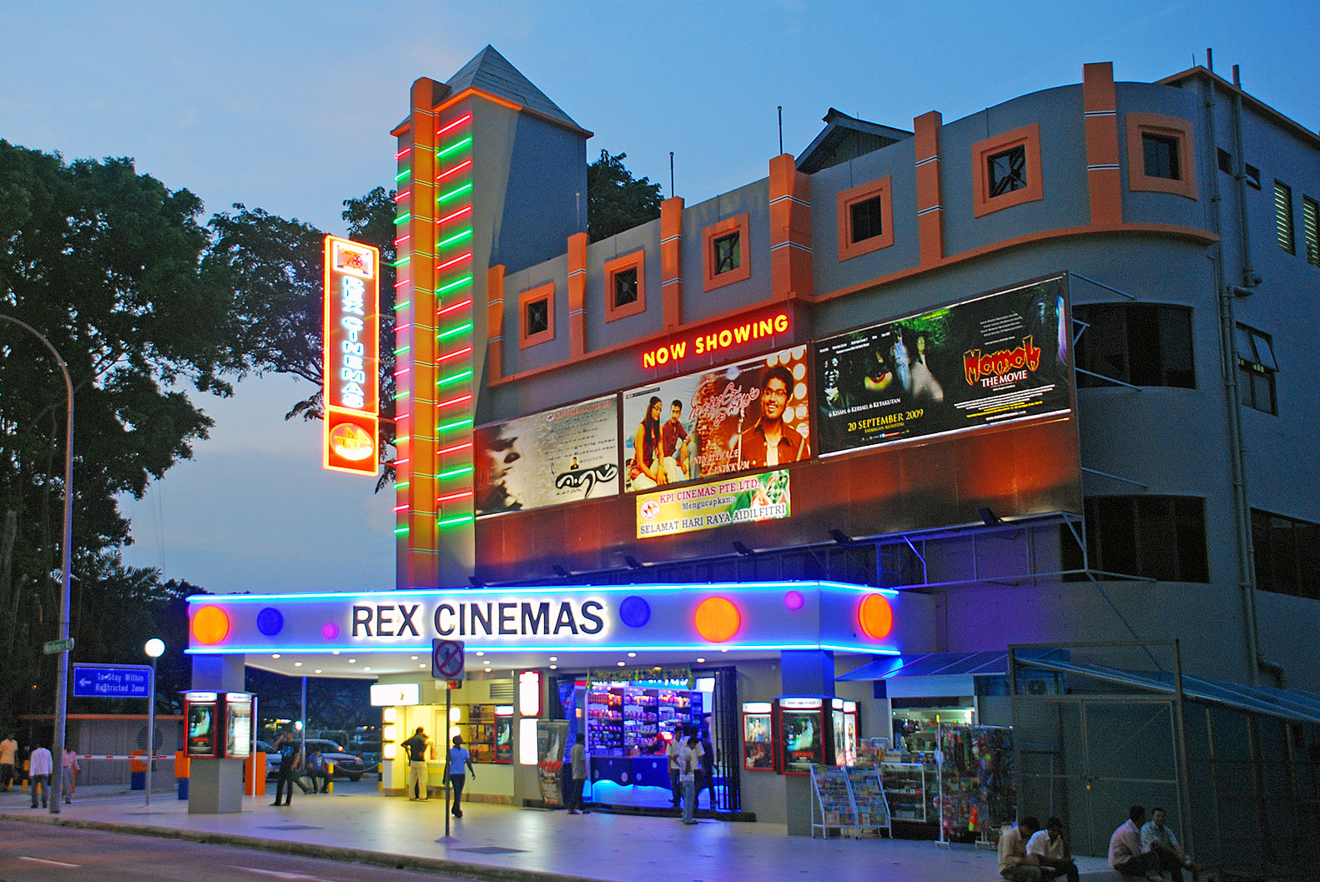 |
| By the 1980s, a dwindling cinema business forced Rex to close its doors. The building, at different points in time, was then used as a singing performance house, an ice rink, a church and a disco. Between 2009 and 2018, Rex returned to its roots and served its original purposes as a movie cinema screening Tamil and Hindi films. Eventually Rex ceased operation in 2018, and the building is currently not in use. (Image Credit: Photo by Choo Yut Shing via Flickr) |
When the revival of Rex as a cinema in 2009, it bought back fond memories for many moviegoers especially those from the merdeka and pioneer generations. Click or tap HERE to reveal below an account by Gwee Thian Hock. (Source: NewspaperSG)
“I am now in my mid-70s and Rex Cinema brings back fond memories. As a regular patron, I was there at the afternoon opening show of Rock Around The Clock, with policemen on duty in the theatre just in case over-enthusiastic rock ‘n’ roll fans got out of hand…And, during my undergraduate days, I made almost daily trips on a Green Bus to the hawker stalls there for my lunch of Indian rojak and mee siam. On the first floor of the corner coffee shop building on Mackenzie Road (where the popular curry puff was sold) there was a Hainanese-run halal restaurant selling Chinese food. It was probably the first of such restaurants."
Victoria Theatre and Concert Hall
The Victoria Theatre and Concert Hall (VTCH) along Empress Place is Singapore’s oldest performing arts venue. Gazetted as a national monument on 14 February 1992, the VTCH comprises two blocks of building constructed more than 43 years apart, in 1862 and 1905 respectively. They are joined by a 54-metre clock tower. In the past, VTCH was used for functions ranging from public events and political meetings to musical and stage performances.
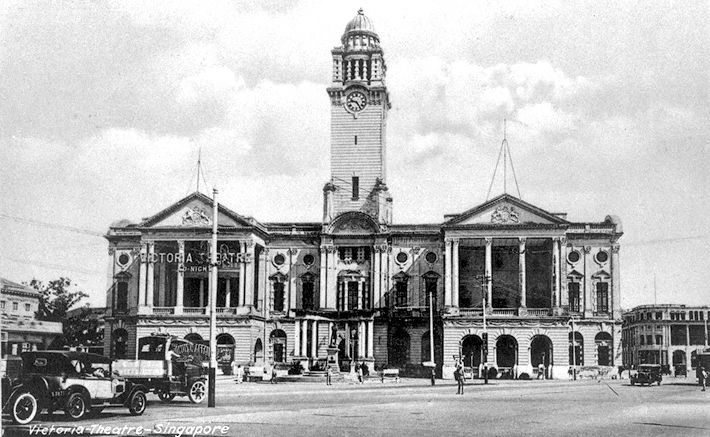 |
| The present theatre and concert hall were originally known as the Town Hall and Victoria Memorial Hall respectively. The Town Hall was designed by municipal engineer John Bennett to carry out the dual function as a theatre and office spaces for the municipality. (Image Credit: Courtesy of National Archives of Singapore) |
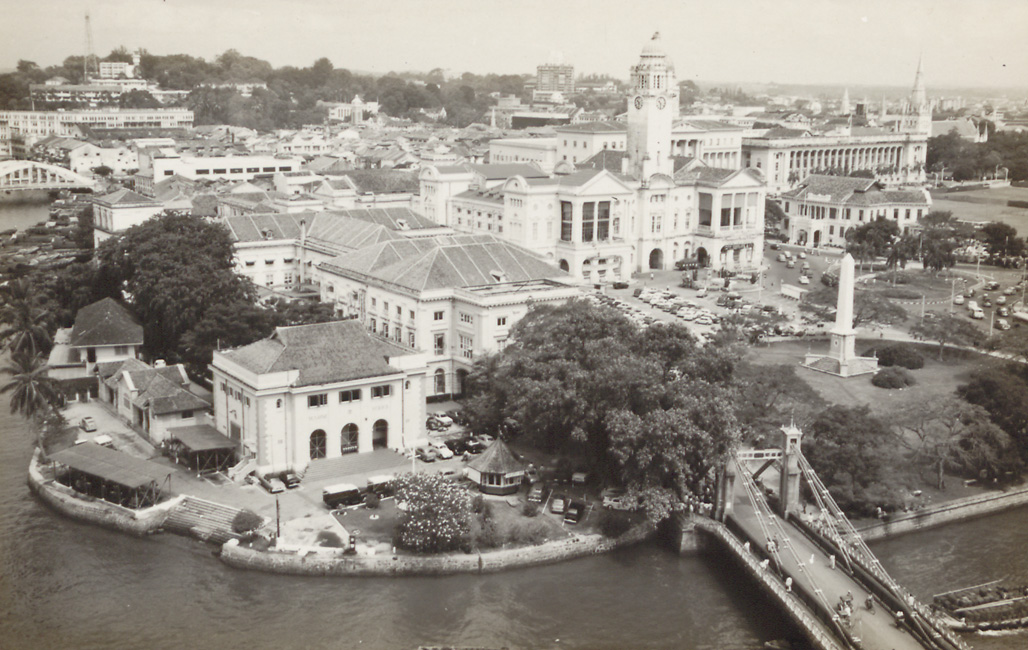 |
| As for the Memorial Hall, it was built to commemorate Queen Victoria. Designed by colonial engineer Alexander Murray and R. A. J. Bidwell from Swan & Maclaren in the Palladian style, the memorial hall was completed in 1908. Its completion also saw both the memorial hall and the Town Hall being joined in the middle by a 54-meter clock tower. About a decade later during the centennial celebrations to commemorate 100 years since the 1819 founding of Singapore, the statue of Stamford Raffles was moved from the Padang to the front of the Victoria Memorial Hall. (Image Credit: All rights reserved, Family of Kouo Shang-Wei and National Library Board Singapore 2007) |
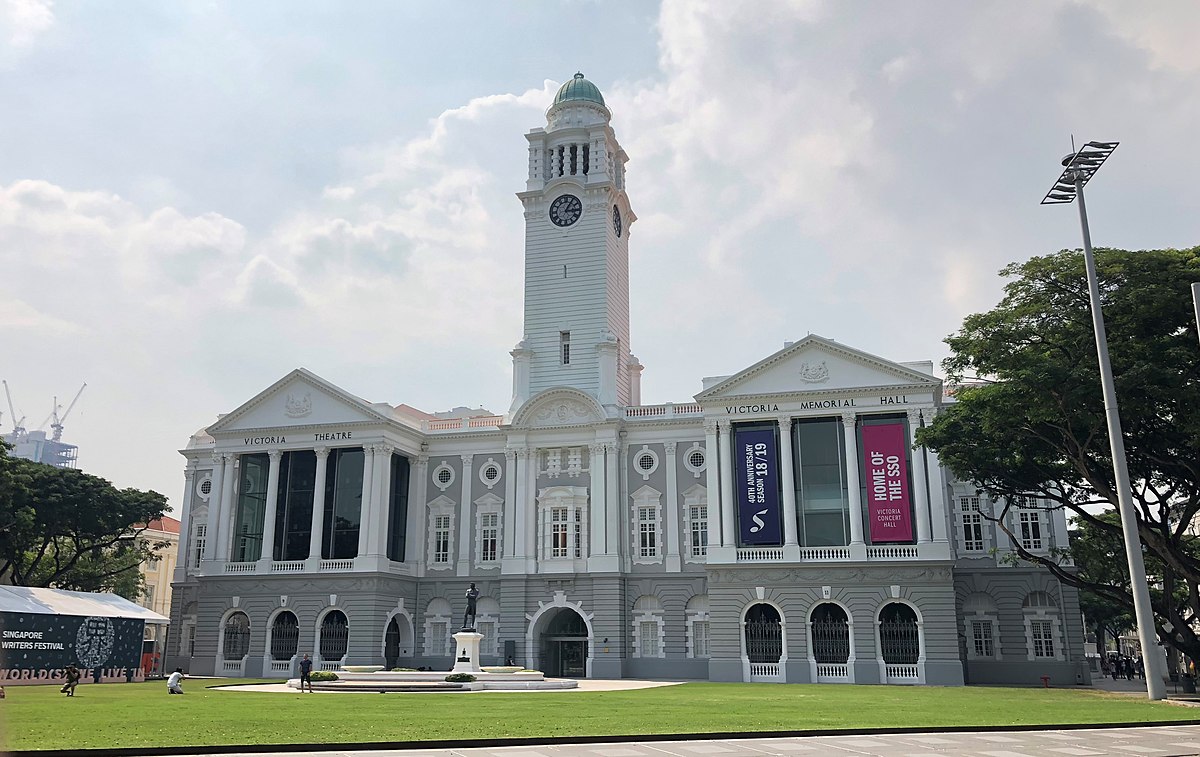 |
| Over the years, VTCH has undergone a series of renovations. The most recent being a four-year restoration from 2010 to 2014 led by W Architects. After its completion, VTCH was reopened to the public in July 2014. (Image Credit: Photo by Bjoertvedt via Wikicommons) |
Jubilee Theatre
Jubilee Theatre or Kwang Hwa Theatre was located along North Bridge Road beside Raffles Hotel and opposite Odeon Theatre. Formerly known as Tivoli Hall, it opened in 1929 and was among the first cinemas to be installed with equipment to support “talkies” or sound films.
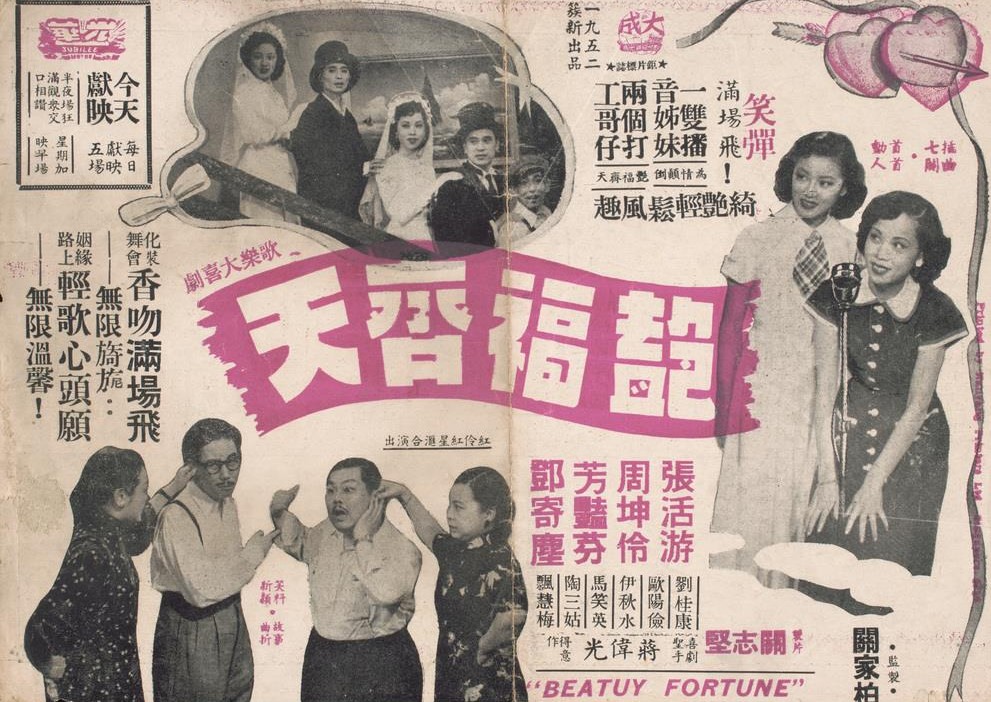 |
| During the 1950s, Jubilee Theatre was the premier theatre for Cantonese films such as the one shown in the handbill above, and bookings had to be made weeks in advance. In 1966, the theatre was bought over by Goh Eng Wah who would go on to establish the Eng Wah Theatres Organisation in 1968. (Image Credit: Courtesy of National Museum of Singapore, National Heritage Board) |
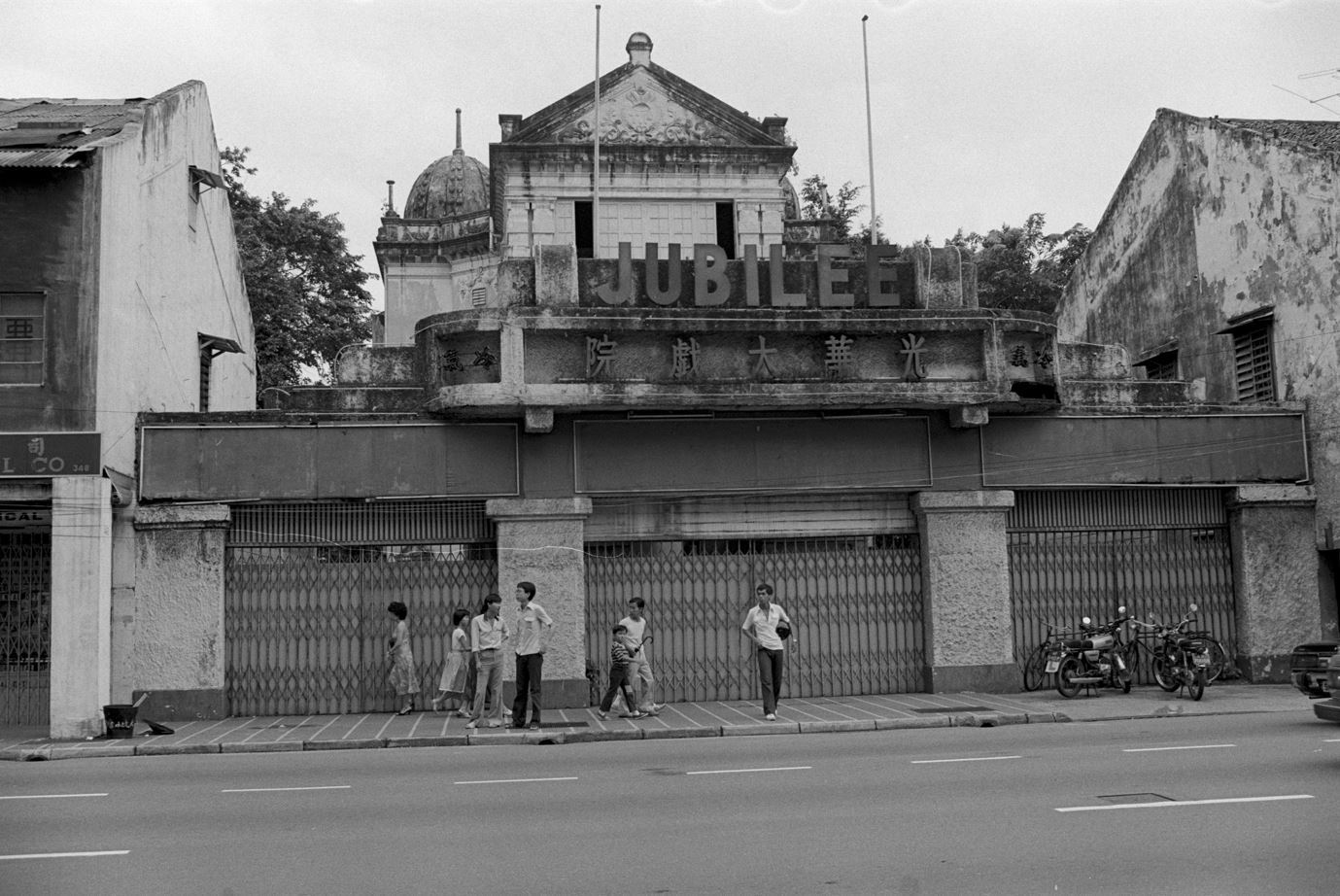 |
| In 1978, however, Eng Wah Theatres had to close the 800-seat theatre permanently due to its lack of modern facilities and declining business. It was said that the theatre’s screen was unable to compete with the newer cinemas that are equipped with wider and better screens, more comfortable seats and carparks. (Image Credit: All rights reserved. Lee Kip Lin and National Library Board, Singapore 2009) |
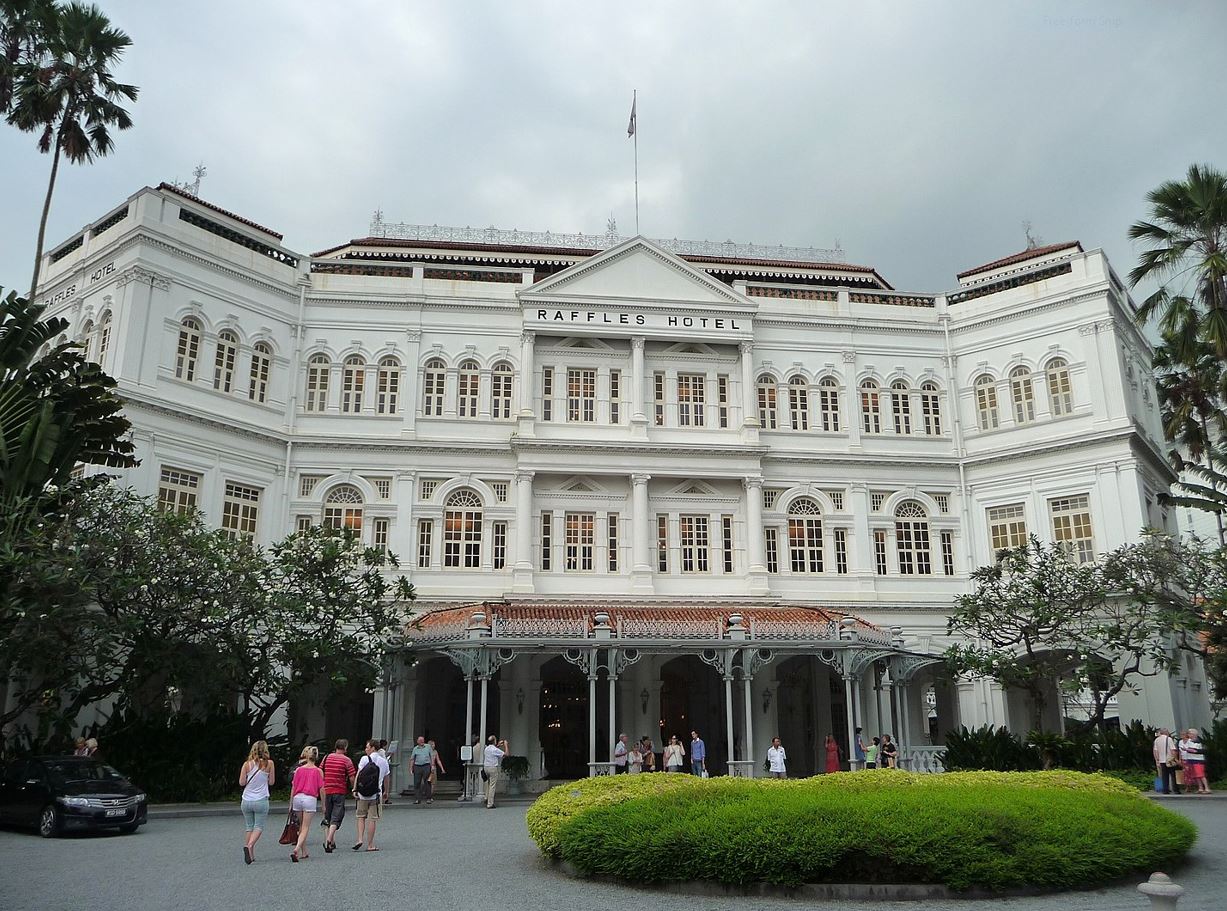 |
| The theatre was later demolished to make way for the extension of Raffles Hotel when the latter won the bid to redevelop the site in the late 1980s into a Victorian-styled theatre playhouse. The new playhouse, known today as Jubilee Hall, is named after the site’s former occupant – Jubilee Theatre. (Image Credit: Photo by Ondřej Žváček via Wikicommons) |
Royal Theatre and Diamond Theatre
Located along North Bridge Road, Royal Theatre and Diamond Theatre were among the string of theatres that used to line the street. They share a common history as they were both built to hold bangsawan performances, which is a form of Malay operatic theatre that focuses its stories predominantly on Malay nobles and royalty, before shifting focus to become among the most popular cinemas screening movies for the Indian community. Both buildings, however, were demolished in the 1970s.
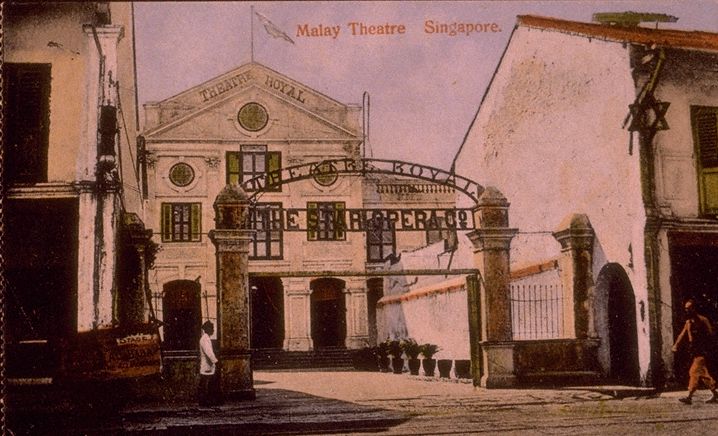 |
| Royal Theatre was located where the current Raffles Hospital is now. Originally known as Theatre Royal, it is believed to be the first “permanent” theatre that staged bangsawan performances when it opened in 1908. Owned by Chinese Peranakan businessman Cheong Koon Seng, theatre’s opening heralded the golden age of bangsawan in Singapore and Malaya which saw the proliferation of new bangsawan troupes including Cheong’s Star Opera Company, and the increase in appetite for their performances. (Image Credit: Courtesy of National Archives of Singapore) |
Click or tap HERE to reveal below former civil servant Mohamed Sidek bin Siraj’s account on the popularity of bangsawan during the pre-war years. (Source: National Archives of Singapore)
The third class is about $1 and the first class in front is about $3 or something… There’s no other entertainment for the Malays except bangsawan. Even that, it started after eight and then finished up at twelve. If you don’t have the transport you have to walk. People will use a bullock-cart from Tanjong Pagar to see bangsawan and say about 10 or 12 people will go back in a bullock cart to Tanjong Pagar.
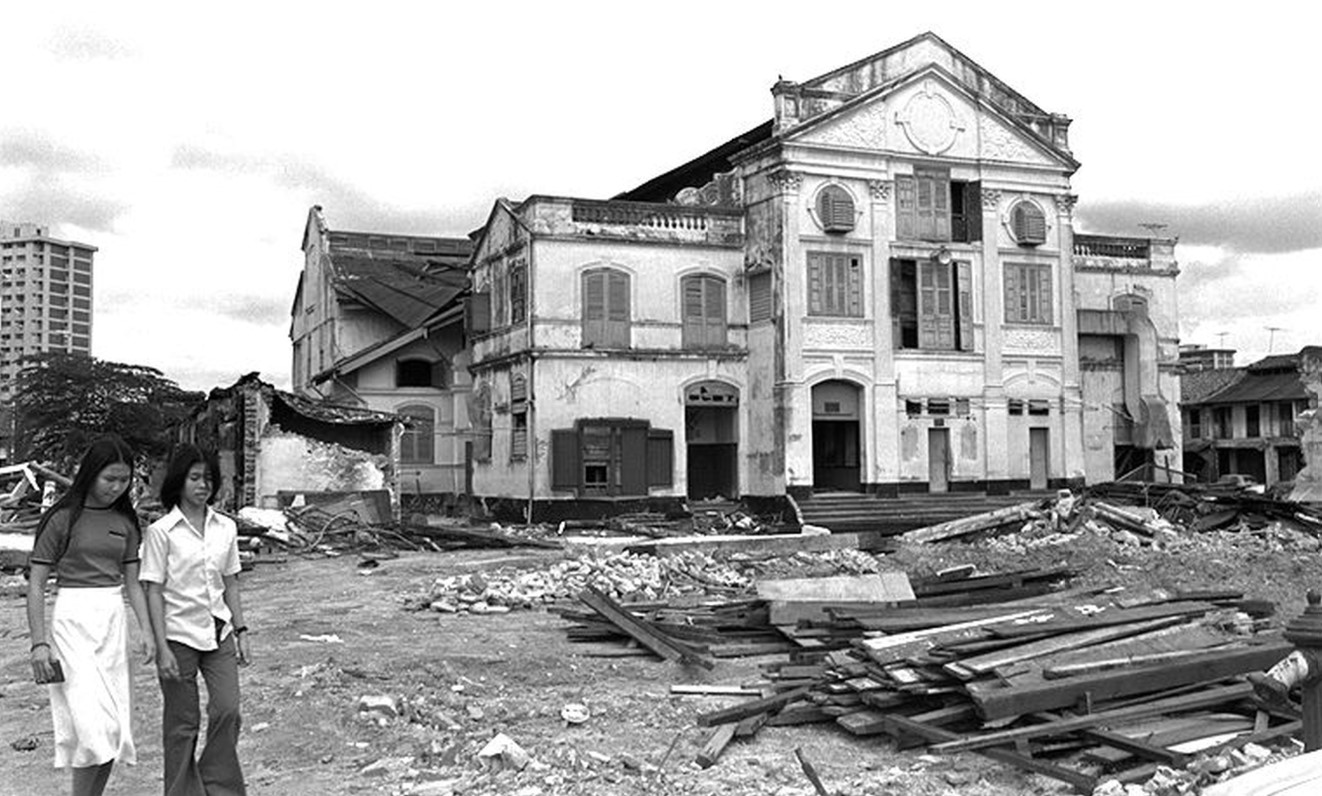 |
| When Cheong died in 1934, his theatre was sold to Amalgamated Theatres, the company managing Capitol and Pavilion cinemas. The company then turned it into a 1,100-seat cinema screening films from India, with the occasional live act from Indian theatrical and performing groups. (Image Credit: The Straits Times © Singapore Press Holdings Limited. Reprinted with permission |
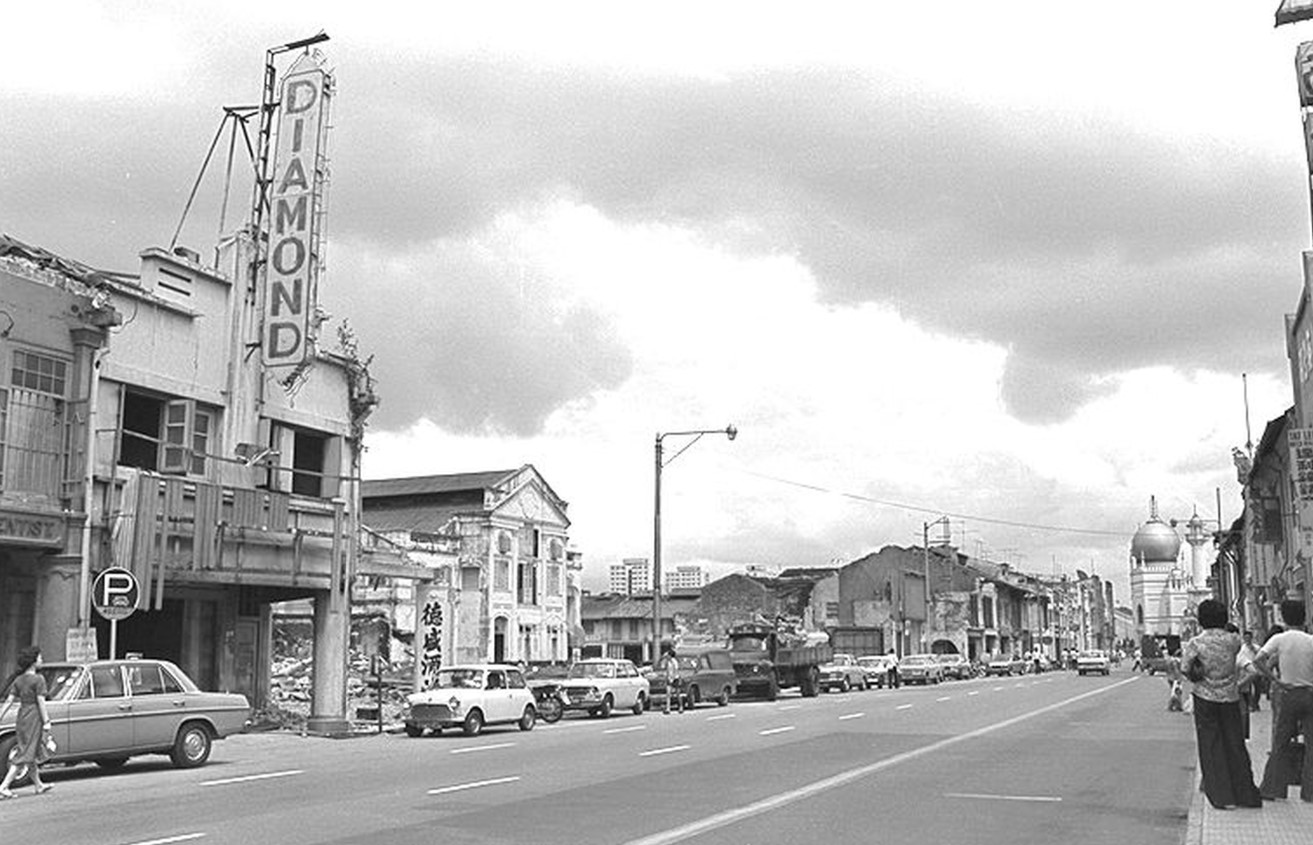 |
| Diamond Theatre was located just a few doors away from Royal Theatre at 499 North Bridge Road. Formerly known as Alexandra Hall, it was leased by bangsawan troupe Opera Yap Chow Tong. As such, during its early days, the theatre was used to staged bangsawan performances. In 1947, similar to Royal Theatre, the theatre was converted into a 600-seat “first-rate” cinema specialising in Indian films. (Image Credit: The Straits Times © Singapore Press Holdings Limited. Reprinted with permission) |
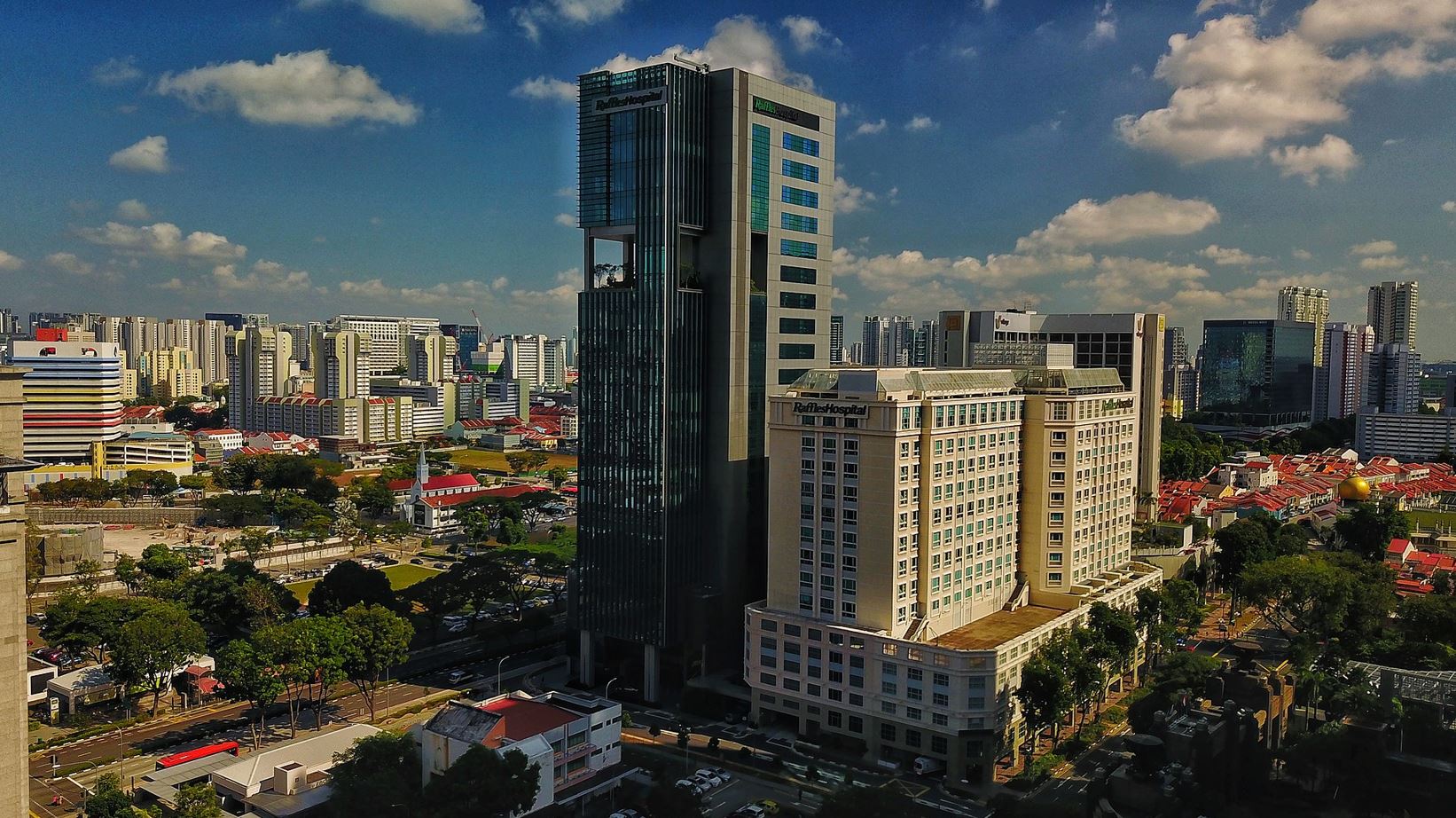 |
| Both Diamond Theatre and Royal Theatre continued with their new leases of life as cinemas screening Indian films until the late 1970s when the government announced its plans to renew the area, leading to the closure and demolition of the two theatres to make way for new development. (Image Credit: Photo by Bot T via Wikicommons) |
Beyond Cinemas
Besides cinemas, Bras Basah was dotted with hotels, clubs and cultural institutions. It was a place frequented by people in search of entertainment and recreation during the colonial period and nation-building years. While many of these entertainment and recreation places are no longer around, some still remain and they continue to be visited by people from the current generation. Below is a story map that lays out the entertainment and recreation places of Bras Basah in the past and present.


